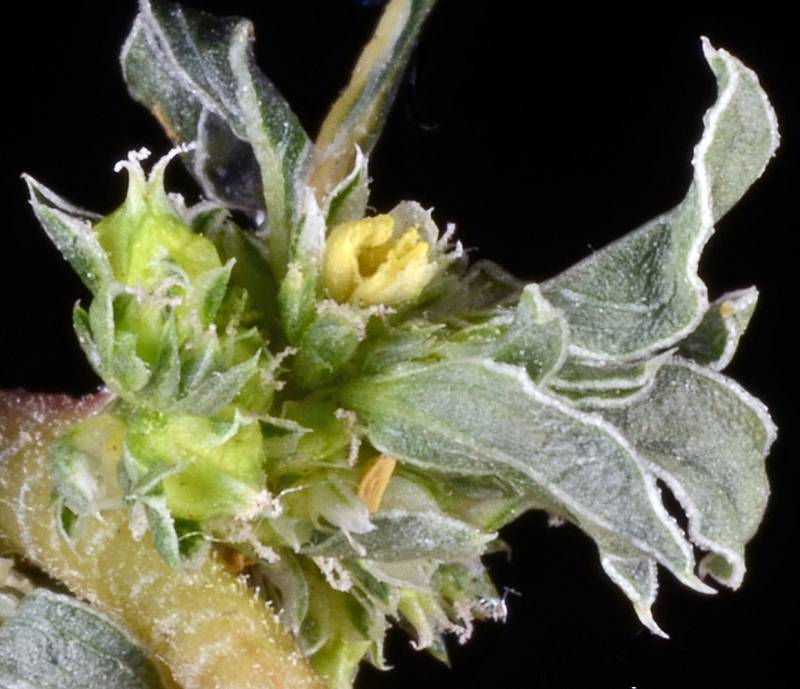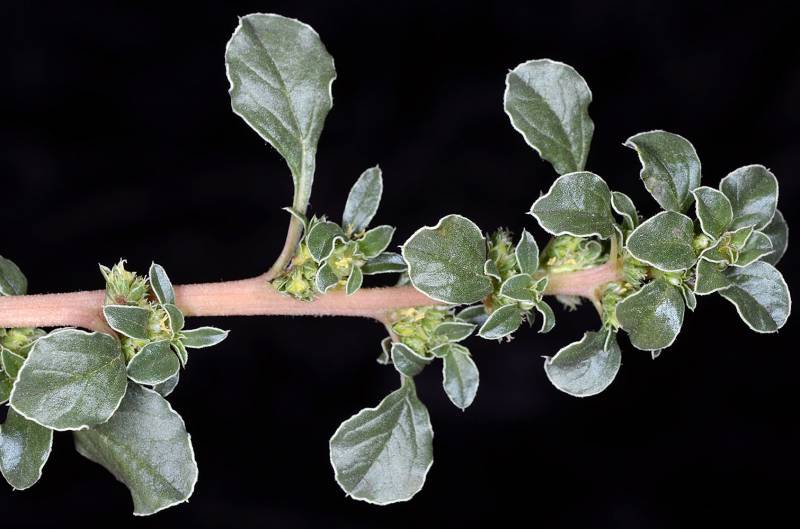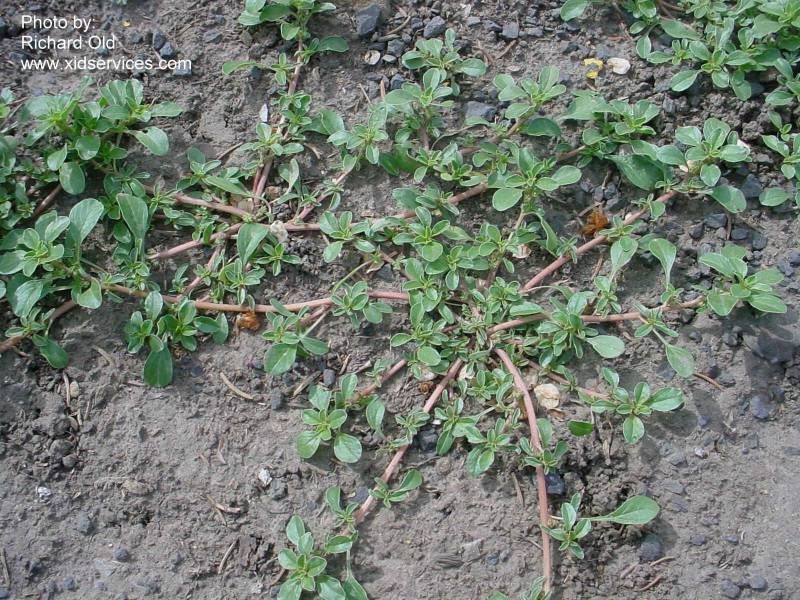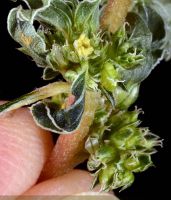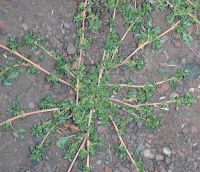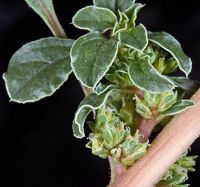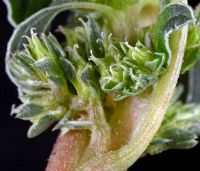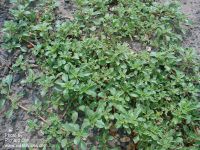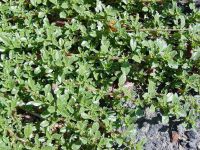Distribution: Occurring chiefly east of the Cascades crest in Washington; Alaska to California, east across North America to the Atlantic Coast; cosmopolitan.
Habitat: Dry, disturbed areas
Flowers: June - September
Origin: Introduced from central United States
Growth Duration: Annual
Conservation Status: Not of concern
Pollination: Wind
Monoecious, glabrous annuals; stems prostrate and forming mats, or ascending, 20-100 cm, heavily branched, green to pale pinkish, glabrous.
Leaves alternate, petiole 3-15 mm; blade generally 10-30 mm long and 4-10 mm broad, obovate to spatulate, base cuneate, apex obtuse, margins entire and flat or slightly wavy.
Inflorescence a cymose axillary cluster, green, 3-flowered; bracts of pistillate flowers 1, narrowly ovate, somewhat leaflike, 1.5-5 mm, equal to or slightly greater than perianth, apex acute.
Staminate flowers perianth parts 3 or 4, 1.5-2.5 mm, stamens usually 3, filaments free, anthers 4-locular; pistillate flowers tepals 4-5, 1.5-3 mm, narrowly ovate to oblong, unequal, outer 2 greater than others, 2-3 mm, stigmas usually 3 and spreading.
Utricles dehiscing along a fissure encircling the whole fruit, 1.7-2.5 mm and generally equaling tepals, somewhat spheric to obovoid, green or sometimes purple, mostly smooth, slightly wrinkled near tip; seeds 1.3-1.7 mm, lenticular, black and dull.
Publication: Proc. Amer. Acad. Arts. 12: 273. (as Amarantus). 1877.
PNW Herbaria: Specimen records of Amaranthus blitoides in the Consortium of Pacific Northwest Herbaria database
WA Flora Checklist: Amaranthus blitoides checklist entry
OregonFlora: Amaranthus blitoides information
E-Flora BC: Amaranthus blitoides atlas page
CalPhotos: Amaranthus blitoides photos

